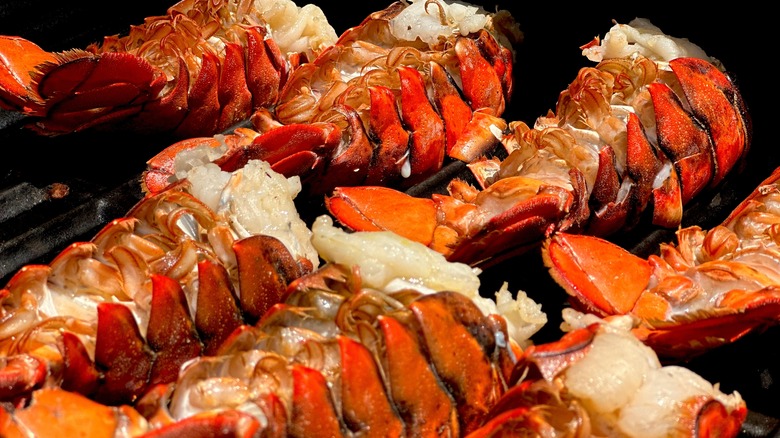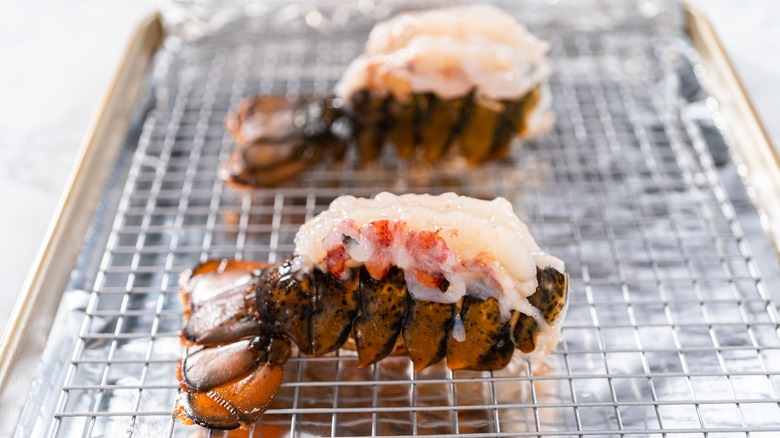How To Prep Fresh Vs Frozen Lobster Tails For The Grill
Grilling lobster tails is a great way to get some seafood cooking on the grill during the summer months (though you can really have them anytime). These tails have a luxurious taste that pairs well with many side dishes and drinks. When buying lobster tails for grilling, there are two major options: fresh or frozen.
Fresh and frozen meats can have different needs when it comes to prepping, cooking, and storing. When grilling lobster tails, the biggest difference when using fresh or frozen meat is thawing. Frozen lobster tails will need some time to thaw out before they can be put on the grill, unlike other seafoods. If you don't give them this thawing time, their flesh can become tough to chew. This will also make it hard to separate the meat from the shell. Be sure to leave enough time for the lobster tails to thaw in the refrigerator (usually for about a day) before you put them on the grill.
Getting lobster tails ready to grill
Both frozen and fresh lobster tails need some prep work before they can be grilled. The tails need to be cleaned, which can be achieved by rinsing them. Next, the shells need to be split so the meat inside can be exposed. This also makes it easier to cook the meat more evenly, as the shell can be quite thick.
A common way to split the shell is called the butterfly method, which consists of slicing the tail in half vertically. To do so, start at the middle of the top of the shell and cut down to the tail. This can be achieved with the help of kitchen shears.
After the shell has been split, be sure to remove the center vein, also known as the lobster's digestive tract. While this vein is not dangerous to eat, it doesn't add to the flavor of the tails, and it can feel grainy when chewed. There might also be roe on the top of the tail, which you can remove and either discard or consume separately. That said, don't make the wasteful mistake we've all made with lobster — instead of discarding the shells, try saving them to make lobster stock.

